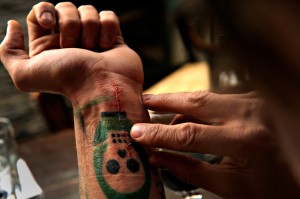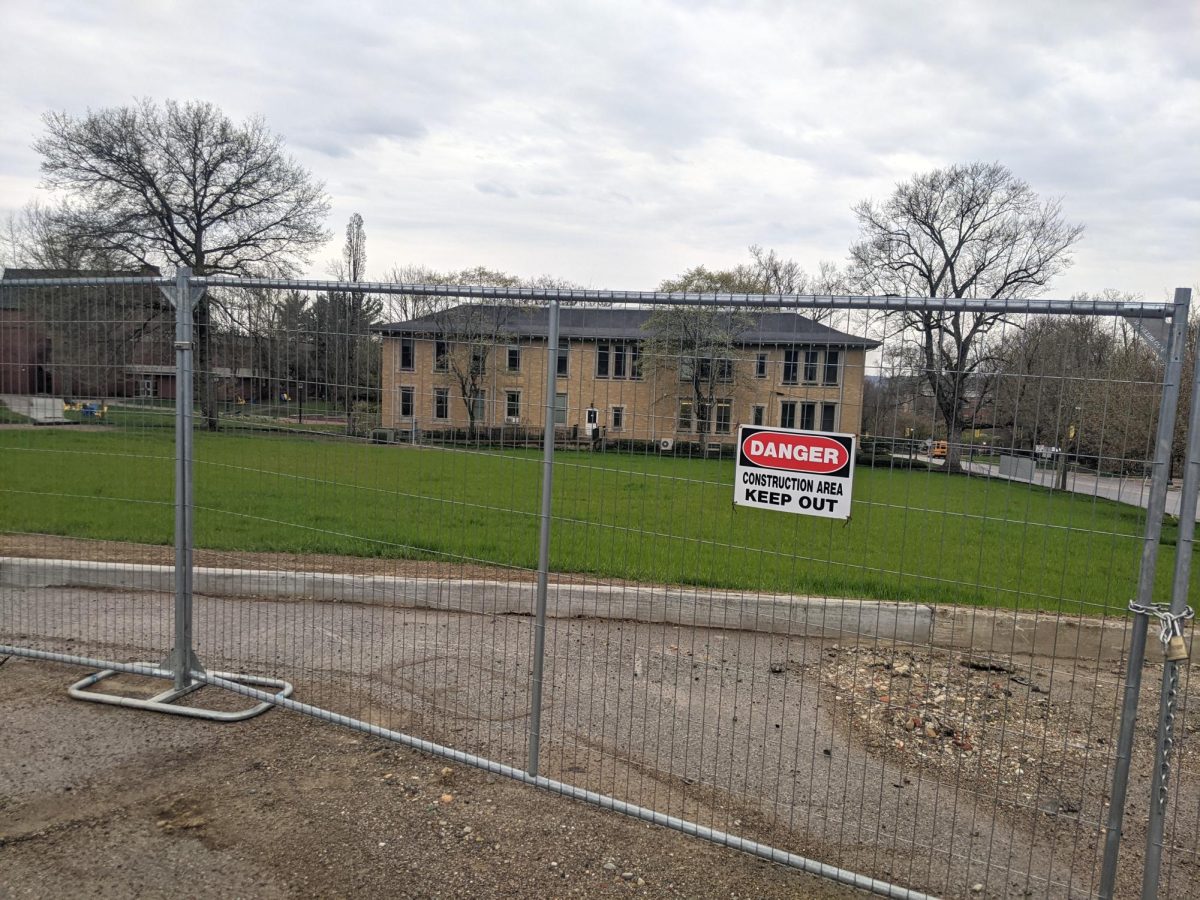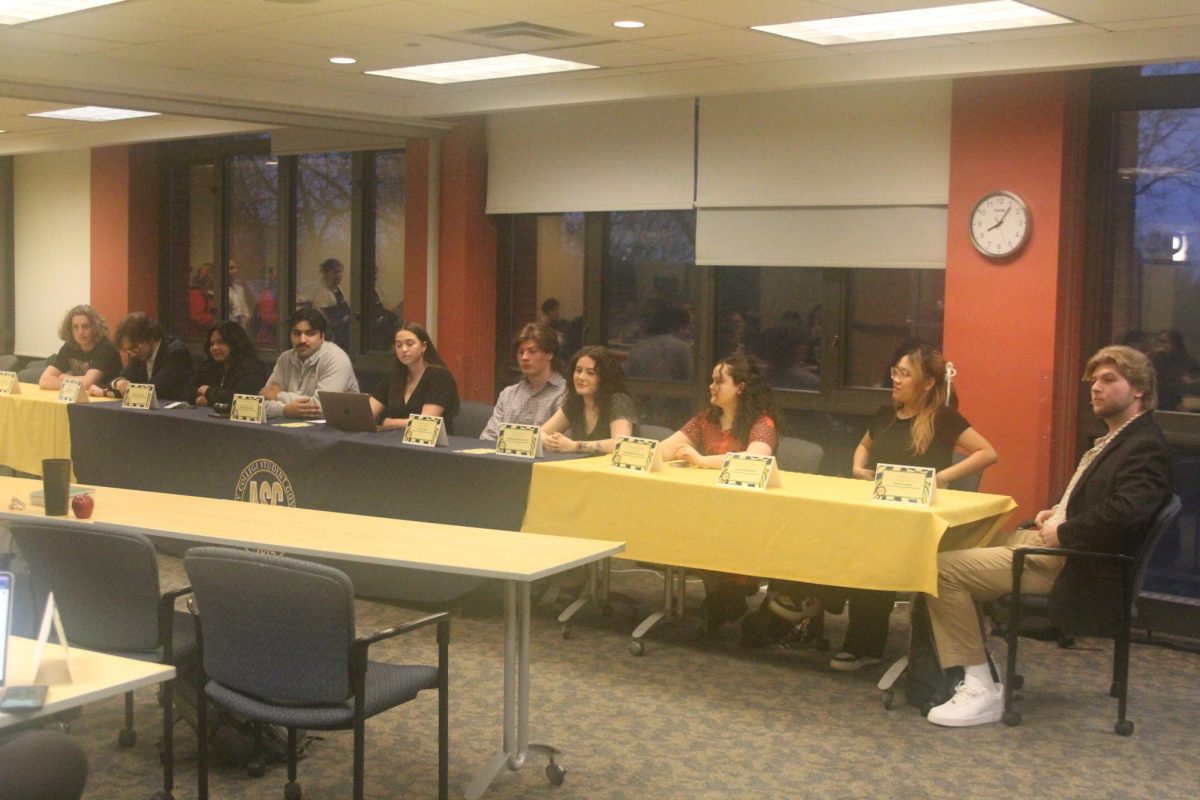
Today and tomorrow Allegheny College hosts its first journalism conference, a gathering of five distinguished journalists and a presentation of their visual coverage of various forms of war.
“Documents of War: The Ethics and Challenges of Visual Storytelling” features two documentary films as well as three different collections of photography.
One contributor to the conference is junior undergraduate student JR Ancheta, 25, from the University of Alaska Fairbanks.
Ancheta and visiting assistant professor of Journalism Cheryl Hatch embedded with soldiers of the 1st Battalion 5th Infantry Regiment 1/25 Stryker Brigade Combat Team, for a month in Afghanistan. They arrived in December of 2011 to visually document soldiers’ experiences on the front lines.
Ancheta and Hatch slept and ate in the soldiers’ quarters, an experience which Ancheta found ethically challenging at times.
Developing such an intimate relationship with the soldiers “could be a good thing or a bad thing as a journalist,” according to Ancheta.
“You’re living, eating, sleeping in the vicinity of the soldiers. You’re talking to them constantly, building these relationships, and you have a natural bond,” said Ancheta. “But yet, as a journalist, you have to be separate to do a decent job at reporting.”
But in dangerous wartime situations, soldiers can protect journalists.
“When you’re out on patrol, you don’t have a gun as a journalist. But they [the soldiers] do, and they’re able to protect you. There’s an ethical challenge there,” Ancheta said.
In these wartime situations of high tension, it can be difficult to document information. Subjects are not always receptive to journalists’ attempts to document and present their experiences.
Ancheta described a time he and Hatch went on an air assault mission in the early morning. A sergeant threatened Ancheta not to take pictures of any casualties that could occur.
“‘If you do, I’ll rip that fucking film out of that camera,’” Ancheta recalls the sergeant saying.
Ancheta said he wanted to diffuse the situation by obliging the sergeant’s request, but Hatch insisted on maintaining journalistic integrity.
“I know the rules of engagement, and if there are casualties, we are allowed to take pictures,” said Hatch. She expressed this same basic sentiment to the sergeant in Afghanistan that December morning.
She added that Ancheta’s camera was digital and did not contain film as the sergeant suggested.
Hatch said journalists, like soldiers, have a specific and often difficult job to do.
“I’m not going to be aggressive, but I’m not going to back down either. I’m just going to plant my feet,” Hatch said. “This is who I am. I’m here to do my job, you’ve got a job to do…but I know the rules and the rules say we can shoot [photos].”
Ancheta, who was recently named one of the top 25 photojournalists under 25 by The Boston Globe, acknowledged that journalism can be risky.
“In the future I want to have a family […] so I don’t know if I want to do [journalism] as a profession, because there are dangers and risks,” Ancheta said. “But I haven’t ruled it out yet.”
At the end of their journey to Afghanistan, Ancheta and Hatch were waiting for available space on a plane to Kuwait when Hatch decided she wanted to report on a military hospital before leaving the country. The hospital has a high success rate of saving lives of soldiers with major injuries from improvised explosive devices, or IEDs.
Ancheta was due to arrive in the U.S. just two days before his classes resumed at University of Fairbanks. He said he was not looking forward to reporting on another story. But Hatch was determined to include the hospital in their project.
“I was not going to leave Afghanistan without going to that hospital,” Hatch said.
At the hospital the journalists were told they could meet with two recently-injured soldiers. At first Hatch visited the soldiers alone while Ancheta waited outside. Then, when Ancheta suspected he might be missing a valuable opportunity, he joined Hatch with the soldiers.
Ancheta introduced himself to the first soldier, from New York. The soldier said his roommate was from Alaska.
Ancheta looked at the soldier in the next bed and realized he recognized him. It was Joe Mill, a high school friend whom Ancheta said he knew as “an altar boy” at church. Ancheta and Mill are from Sitka, Alaska, a town of 8,000 people.
“‘JR Ancheta, what the fuck are you doing in Afghanistan?’” Ancheta recalls Joe Mill saying to him.
Before Hatch entered the soldiers’ hospital room, a male nurse had informed the two journalists that the soldiers were not fond of the media.
Journalistic projects depend heavily on subjects’ cooperation.
Two-time Pulitzer Prize winner Craig F. Walker of The Denver Post will present the most recent of his award-winning stories, “Welcome Home,” a photographic essay about Brian Scott Ostrom’s struggle with Post Traumatic Stress Disorder after he returned from his second deployment in Iraq. Ostrom served with the 2nd Reconnaissance Battalion, a division of the Reconnaissance Battalions which observe and report on enemy activity.
In Walker’s article Ostrom described the last seven months he spent deployed in Iraq as “the most brutal time of [his] life.” Walker said he was lucky to work with Ostrom, who was open to a photographer shadowing him during difficult moments: panic attacks, breakdowns, heated fights with his girlfriend.
“It was my job…since he was willing to share [his PTSD], it was my responsibility to document it,” Walker said.

Walker never saw Ostrom acting self-destructively or violently. While he and Ostrom developed a close relationship (they still talk once a week), Walker said he did not want to try to comfort Ostrom during his frequent panic attacks and fights with his girlfriend. As a reporter, he was there to document information: the effects of Ostrom’s painful experiences with war.
“He wasn’t sharing it with me, he was sharing it with the entire world through allowing me to be there,” Walker said.
Walker’s first Pulitzer prize-winning story, “American Soldier,” told the story of high school graduate Ian Fisher and his transition into the military. The story won the Pulitzer for photography in 2010.
“I’ve been really fortunate to receive a couple wonderful honors for the [stories], but it’s them,” Walker said, referring to the two soldiers. “They’re the ones that shared their story. They really understood what I was trying to do, and they totally opened up their lives. That’s the most important thing.”
Another contributor, head of San Francisco State University’s photojournalism program Ken Kobré, helped produce A Deadline Every Second. The documentary follows twelve top Associated Press photojournalists as they report in various locations across the United States and Europe.
Kobré described his own month-long experience in Jerusalem as “quite an exhausting experience.” He said three photographers were injured in one day while he was working on the film, at a clash between Palestinian youth and Israeli soldiers on the outskirts of Jerusalem.
“I was there when they got shot. No one died, but the Israeli army was using rubber bullets, and they hit one of the photographers in the arm. I recorded that [on video],” said Kobré.
Though Kobré admits to feeling frightened at certain times, he was not too scared to continue reporting with the other photographers.
Another contribution is Pamela Yates’ documentary Granito: How to Nail a Dictator, a depiction of the Guatemalan civil war. The film won the Sundance Special Jury Award in 2011. It continues Yates’ earlier 1984 documentary, “When the Mountains Tremble.” This film is one of the only documentations of a Guatemalan military genocide supported by the United States.
Also featured at the conference will be photographs from another of Hatch’s projects, which is a continuation of her documentary, The Cost of Conflict. The documentary focuses on women in Eritrea who are struggling to obtain equality, despite having fought alongside men for the country’s freedom from Ethiopia.
An exhibition of historic photographs from the Nuremberg trials, taken by late U.S. army photographer Raymond D’addario, will also be featured.
The conference will begin tonight with the screening of Deadline Every Second at 7 p.m. Tomorrow the conference will continue, beginning with a presentation of Hatch’s and Ancheta’s photography at 10 a.m. Walker will present both of his photographic essays at 1 p.m., and Yates’s film will screen at 7 p.m.
All events will take place at the Vukovich Center for Communication Arts, and are free and open to the public.






